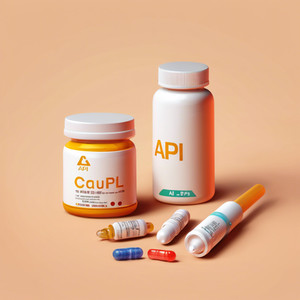Pharmacodynamics (PD) refers to the study of the biochemical, physiological, and molecular effects of drugs on the body and involves understanding the mechanisms of action and the relationship between drug concentration and effect. In the context of Active Pharmaceutical Ingredient (API) development, pharmacodynamics plays a crucial role in determining the therapeutic efficacy and safety profile of a
drug.
Here are the key aspects of pharmacodynamics in API development:
1. Mechanism of Action (MoA)
1. Target Identification
- Receptor Binding: Identifying specific receptors or enzymes that the API interacts with.
- Molecular Pathways: Understanding the biochemical pathways affected by the API.
2. Mode of Action
- Agonists and Antagonists: Determining if the API acts as an agonist (activating a receptor) or antagonist (blocking a receptor).
- Enzyme Inhibition: Assessing if the API inhibits enzyme activity and its subsequent impact on metabolic pathways.
2. Dose-Response Relationship
1. Efficacy and Potency
- Effective Dose (ED): Determining the minimum concentration of the API that produces the desired therapeutic effect.
- Potency: Comparing the strength of different APIs by their ability to achieve a given effect at lower concentrations.
2. Therapeutic Index
- Safety Margin: Calculating the therapeutic index (ratio of toxic dose to effective dose) to ensure the API has a wide safety margin.
- Dose Optimization: Establishing optimal dosing regimens that maximize efficacy while minimizing side effects.
3. Receptor Binding and Affinity
1. Binding Affinity
- Kd Value: Measuring the dissociation constant (Kd) to understand how tightly an API binds to its target receptor.
- Binding Kinetics: Evaluating the rate of association and dissociation from the receptor.
2. Receptor Selectivity
- Specificity: Ensuring the API selectively binds to the intended target with minimal off-target interactions.
- Minimizing Side Effects: Reducing adverse effects by enhancing receptor selectivity.
4. Signal Transduction Pathways
1. Downstream Effects
- Second Messengers: Studying the impact of API binding on intracellular signaling molecules like cAMP, IP3, and Ca2+.
- Gene Expression: Investigating how the API influences gene expression and protein synthesis.
2. Cellular Responses
- Proliferation and Apoptosis: Understanding how the API affects cell growth, division, and programmed cell death.
- Immune Modulation: Examining the API's effects on immune cell function and cytokine production.
5. Pharmacodynamic Models
1. In Vitro Studies
- Cell Culture: Using cell lines to study API effects on cellular targets and pathways.
- Bioassays: Measuring biochemical or cellular responses to the API in controlled settings.
2. In Vivo Studies
- Animal Models: Assessing the pharmacodynamic effects of APIs in animal models to predict human responses.
- Translational Studies: Bridging the gap between preclinical findings and clinical outcomes.
3. Mathematical Modeling
- PK/PD Modeling: Integrating pharmacokinetic (PK) and pharmacodynamic data to predict drug behavior in the body.
- Dose-Response Curves: Using mathematical models to simulate and understand the dose-response relationship.
6. Biomarkers and Surrogate Endpoints
1. Biomarker Identification
- Predictive Biomarkers: Identifying biomarkers that predict response to the API.
- Pharmacodynamic Biomarkers: Using biomarkers to monitor the biological response to the API.
2. Surrogate Endpoints
- Clinical Trials: Employing surrogate endpoints that correlate with clinical outcomes to expedite drug development.
- Regulatory Approval: Utilizing validated biomarkers and endpoints for regulatory submissions.
7. Adverse Effect Profiling
1. Toxicodynamics
- Mechanisms of Toxicity: Investigating the mechanisms underlying adverse effects and toxicities.
- Safety Pharmacology: Conducting studies to identify potential side effects and their pharmacodynamic basis.
2. Risk-Benefit Analysis
- Balancing Efficacy and Safety: Weighing the therapeutic benefits of the API against its potential risks.
- Mitigation Strategies: Developing strategies to minimize adverse effects and enhance the safety profile.
8. Clinical Pharmacodynamics
1. Phase I Clinical Trials
- Dose-Escalation Studies: Determining safe dosage ranges and initial PD effects in healthy volunteers.
- Pharmacodynamic Markers: Identifying markers that correlate with drug action and effects.
2. Phase II and III Clinical Trials
- Efficacy Studies: Evaluating the API's therapeutic efficacy and optimal dosing in patients.
- Long-Term Effects: Monitoring long-term pharmacodynamic effects and safety in larger patient populations.
Conclusion
Pharmacodynamics is a foundational aspect of API development that ensures the efficacy and safety of pharmaceutical drugs. By understanding the mechanisms of action, dose-response relationships, receptor binding, signal transduction pathways, and adverse effect profiles, researchers can optimize API design and dosing regimens. Integrating pharmacodynamic insights with pharmacokinetic data and employing robust preclinical and clinical models are essential for developing effective and safe APIs that meet regulatory standards and improve patient outcomes.




